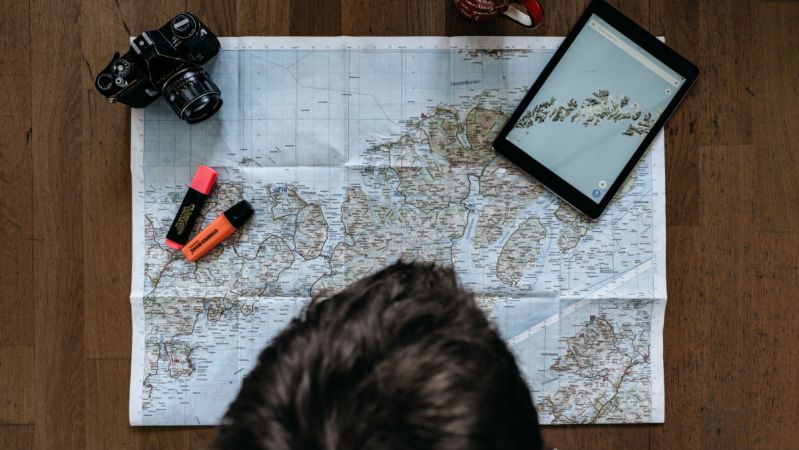The road-tripping season is upon us. With a bevy of always-connected technology at our fingertips, it’s easy to get too complacent when it comes to packing the right emergency gear. Stranded aside a major freeway, you’re likely just a phone call away from help. But, what if you get caught out far from civilization and, worse yet, in the desert? Here’s a primer on what to pack to ensure you don’t become a statistic.
Related:
- How to plan a road trip
- Best podcasts for road trips
Check and Double-check the Essentials
It’s easy to overlook the essentials. While you can survive weeks without food, dehydration kills much, much faster anywhere, but especially in the desert. First and foremost, pack twice — even three times — as much water as you think you’ll need. For desert trips, carrying a gallon of water per person per day is ideal. If your ride completely craps out even a few miles from the main road and you’re without cell service, you could be staring down hours or more in the desert heat. Without shade or AC, things are likely to get very hot very quickly. Electrolyte tabs (like these from nuun) are a great way to have key nutrients on hand whenever and wherever you need them.

Prep for Frigid Nights
Just as dangerous as dehydration from the heat is the bone-chattering cold temperatures you’ll face when the sun goes down. Many people are surprised to learn that those triple-digit temperatures during the day can easily drop below freezing once the sun goes down. Pack accordingly. Think: warm pants, multiple top layers, gloves, and a winter hat in case you need to spend considerable time in your car waiting for daybreak.
Take a Hard Copy Backup
Technology fails — often when you need it most. If you’re planning to get far, far off the beaten path, take a detailed paper map book or fold-out map with you. Modern GPS systems work just about anywhere, but batteries die, signals can become inexplicably lost, or they can otherwise simply crap out because … who knows why? A paper backup never fails. Plus, when you’re finally able to signal or call for help, it won’t do you any good if you can’t accurately describe to rescue workers where in the hell you are.

Tell a Friend
It’s common knowledge for backcountry hikers: map out your route and send a digital copy to someone you trust. Let them know where you’re headed and how long it should take you to get there. Then confirm once you arrive safely. Let them know that, if they don’t hear from you by a certain time, it’s cause for concern.
Consider Packing an SOS Beacon
That always-connected technology I railed against earlier? Well, it turns out it can still help save your life. Most smartphones are useless in the desert. But, today’s SOS beacons rely on GPS technology to ensure you can send out a distress call from quite literally anywhere on the planet. There’s a lot to like about those from SPOT and ACR including long battery life, little to no subscription cost, and global coverage. The most basic versions feature a simple push-button design that’s meant to be depressed if things go south. Some even allow you to send simple text messages to family and friends to provide more detailed updates. But, consider these are meant as a last-ditch effort when all else has failed. They’re not an excuse to go out unprepared and rely on expert search-and-rescue workers (who could be saving people in real peril) to save you because you were too boneheaded to heed the rest of the advice here and pack accordingly.
And if your road trip is already planned out, make sure to download our playlist for the best Road Trippin’ songs.
Editors' Recommendations
- How to survive a long-distance RV road trip with your significant other
- 7 Retro-Cool Airstream Resorts in America Worth Road Tripping For
- Best Road Trips in the World: 12 Drives Worth Flying For
- The Best Road Trip Songs: Hit Play Then Hit the Gas


